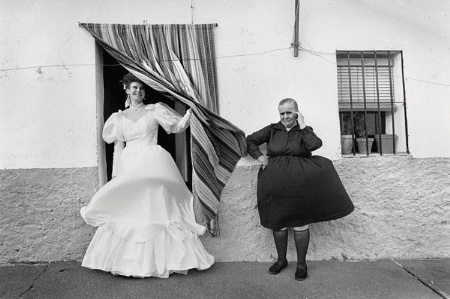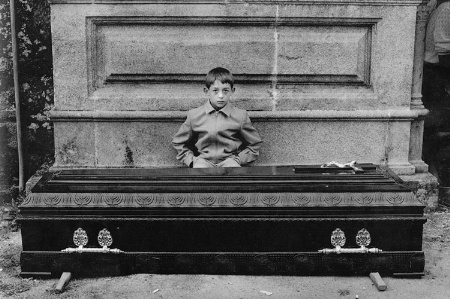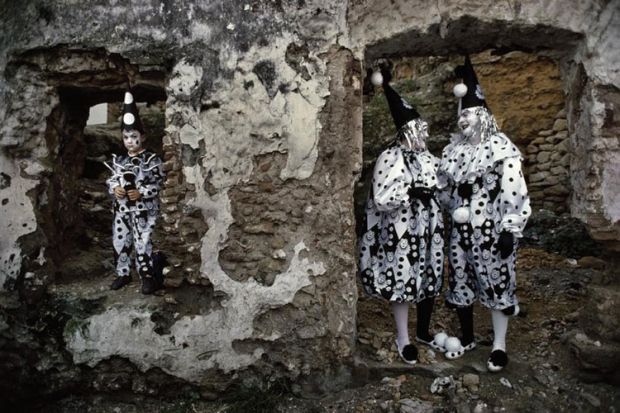Source: Cristina Garcia Rodero
Scene from Don Gil of the Green Breeches
Spanish Golden Age Theatre Season
Ustinov Studio, Theatre Royal Bath
Until 21 December
The most acclaimed and influential artistic achievements of the Spanish Golden Age for us today are Miguel de Cervantes’ great novel, Don Quixote, and Diego Velázquez’s majestic painting, Las Meninas. Both provide tangible evidence of the period’s engaging self-absorption and emerging modernity. For those who lived through the late 16th and 17th centuries within the bounds of Spain’s empire, however, the most acclaimed artists were dramatists and the most influential art form was the play.
The theatre, of course, is a fleeting medium, dependent on performance, but such was its popularity in Spain that, in relative terms, the Golden Age became the most intense period of play-writing and production in history. The forthcoming season of three Spanish Golden Age plays at the Ustinov Studio in Bath provides a rare, sustained opportunity for British theatregoers to assess this legacy and measure it against the peaks of English drama from the Elizabethan and Jacobean periods.
The comedia nueva – or new type of theatre, developed principally by Félix Lope de Vega (1562-1635) as the 16th century came to a close – was a mixed form. Its early practitioners were well aware of the classical division between the comic and the tragic but felt, as Lope put it, that a flexible combination of the two, although it risked appearing monstrous to the academy member, produced something akin to nature and, even more importantly, a variety closer to what the paying audience demanded to see and hear.
Their plays were written in three acts in a variety of verse forms, some popular and traditional, others more recherché, and were sold directly to actor-managers who ran theatrical troupes, often made up of renowned actors and actresses specialising in a limited variety of parts. To the British audience, Spanish Golden Age theatre tends to feel both familiar (thanks in part to shared classical and early Italian sources) and yet attractively distinct. Themes, ideas and character types are recognisable and yet slip off in new directions or come dressed in unfamiliar clothing. Indeed, the English and Spanish traditions, kept largely apart by historical accident, share more than they would have been comfortable confessing.

The three works that Laurence Boswell, artistic director of the Ustinov, has chosen for the Golden Age season in Bath this autumn were all written after the more experimental period of the 1590s was over and once the comedia nueva had become indisputably established as the dominant form of popular theatre in Spain. They are mature works from within the Golden Age canon and, although not well travelled, have all been performed fairly regularly in Spain in recent decades. Two are by Lope de Vega himself, the predominantly comic A Lady of Little Sense (La Dama Boba, 1613) and the late tragedy Punishment without Revenge (El Castigo sin Venganza, 1631), and the third is by Lope’s acolyte and then competitor, the monk-playwright Gabriel Téllez, known as Tirso de Molina (c.1579-1648). His Don Gil of the Green Breeches (Don Gil de la Calzas Verdes, 1615) is one of the most sparkling and ambitious comedies produced anywhere in Europe in the period.
Although only two years apart in their dates of composition and both set predominantly in their native Madrid – the thriving new capital city – the comedies by Lope and Tirso are quite different in their emphasis and ethos. A Lady of Little Sense charts the attempts of a father to marry off his two daughters, the bluestocking, Nise, and the ignoramus, Finea, who is the dama boba of the play’s title. Its domestic, middle-class setting and apparently conventional characters might lead the audience to believe that they have witnessed this story before, but Lope, despite his prolific rate of production, is usually ingenious in his twisting of dramatic character and plot and his refusal to let the public see and hear exactly what they expect – at least until the denouement.
In his youth, Lope had been an admirer of the travelling commedia dell’arte troupes, and the farcical elements are expertly written and constructed, as they are in his dark comedy The Dog in the Manger (which Boswell directed for the Royal Shakespeare Company in 2004). However, there is always something to ponder beyond the undoubted entertainment, at least for the more thoughtful spectator. In this case, Lope reflects on both idealised, neo-Platonic theories of love, then popular in academic circles, and commonplaces, backed by the authority of Ovid, on the topic of love as the great educator. Even the father, so often the comic victim of the younger generation’s tricks, has his role enhanced here.
However, the most fascinating aspect of Lope’s comedy for those more familiar with English theatre of the same epoch will be the extent and depth of the daughters’ roles. Unlike Shakespeare, Lope wrote for actresses and, in the case of A Lady of Little Sense, he was writing the part of Nise for a particular individual, Jerónima de Burgos. This personal relationship – Lope gave Jerónima his manuscript, which survives today – pushed the playwright to heights and subtleties of female characterisation rarely achieved in other national dramas in the period.

Lope de Vega’s theatrical genius had been an inspiration for Tirso de Molina, from the Order of Our Lady of Mercy, 17 years Lope’s junior, but Don Gil of the Green Breeches was a comedy that threatened their friendly relationship. Lope disapproved of the play and, indeed, its comic vision is quite distinct from his own. Although Lope’s theatre was engaged socially and he could be highly personal, he was less satirical or morally censorious than Tirso by nature.
Tirso’s comedy is also ostensibly about love: the dishonoured Doña Juana (female version of the infamous Don Juan Tenorio, a character brought to life by Tirso in The Trickster of Seville) sets out from Valladolid to win back her caddish lover, who has been sent to Madrid to make a more advantageous marriage. Juana’s schemes, initially disguising herself as the rustic-sounding Don Gil, are so elaborate and excessive that they begin to make the audience reflect on the very nature of comedy itself. This exaggeration has a purpose, however, since Tirso, writing from his monastery, is highly critical of the money-grubbing social hierarchy and the lack of morality as a guiding force in society. Absurdity is one of the weapons by which he makes this known. That is not to say that the dramatist preaches: he understood that his first duty was to entertain the Madrid audience, which had placed Lope on a pedestal, and he outdoes his model with his outrageous invention and coruscating wit.
As he neared the end of his life, Lope, who had always been anxious about his standing in the theatrical world, reacted to the imagined disapproval of other nations and the appearance of the pájaros nuevos, as he called them (the up-and-coming playwrights who included the future court dramatist, Pedro Calderón de la Barca, 1600-81), with a final bid for immortality. He calls Punishment without Revenge a tragedy “written in the Spanish style” but in it, particularly with his claustrophobic concentration on the central story, he comes closer to a more classical form than had been his wont. The story of the philandering Duke of Ferrara, his arranged marriage to the beautiful Casandra and her adultery with her stepson, Federico, is taken from an Italian novella by Matteo Bandello, itself based on a historical event.
The play is beautifully constructed, as the audiences had come to expect of Lope, but its emotional power lies in the extraordinary manner in which the playwright manages and maintains a balance between the sympathy and revulsion felt for the three main characters, and in the beauty of its poetry. Lope wastes not a word and leads his audience spellbound to a conclusion they barely dare imagine.
There have been signs in the past two decades of an end to the relative obscurity into which the glittering drama of the Spanish Golden Age has fallen outside Spain. This three-play season in Bath is a new opportunity for British theatregoers to witness its previously hidden quality and to signal their desire for more.
Register to continue
Why register?
- Registration is free and only takes a moment
- Once registered, you can read 3 articles a month
- Sign up for our newsletter
Subscribe
Or subscribe for unlimited access to:
- Unlimited access to news, views, insights & reviews
- Digital editions
- Digital access to THE’s university and college rankings analysis
Already registered or a current subscriber? Login
